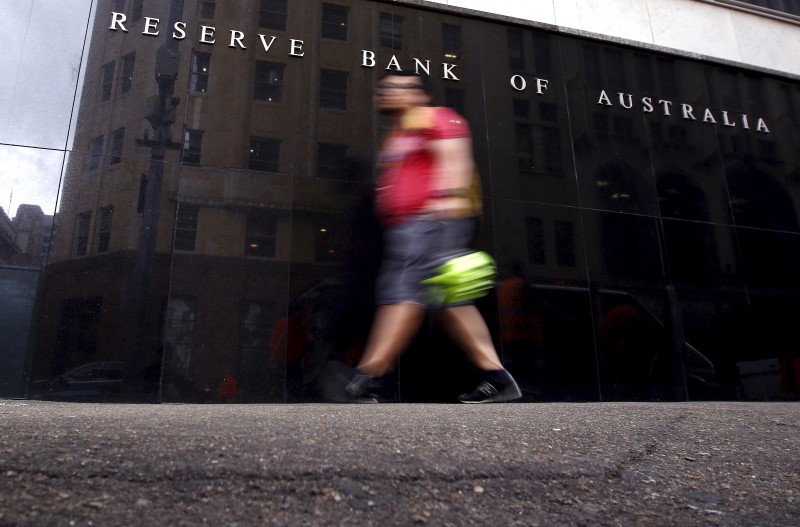* RBA keeps rates at 2 pct, sees room to cut if needed
* Notes a rising A$ "complicates" the economic outlook
* Markets imply around 50-50 chance of easing by August
By Wayne Cole
SYDNEY, April 5 (Reuters) - Australia's central bank held interest rates steady for a 10th straight policy meeting on Tuesday, citing evidence of continued growth at home despite an unhelpful rise in the local dollar.
Bucking the worldwide charge toward negative rates, the Reserve Bank of Australia (RBA) kept its cash rate at 2 percent in a widely expected decision.
Again the door was left open to an easing should developments in inflation, unemployment or the global economy warrant it, but there was little sign a move might be imminent.
"The Board judged that there were reasonable prospects for continued growth in the economy," RBA Governor Glenn Stevens said in a brief statement.
"Continued low inflation would provide scope for easier policy, should that be appropriate to lend support to demand."
In a Reuters poll of 41 analysts, all had expected no change in the cash rate this week. AU/INT
The one major change to the statement was to note that the Aussie dollar had risen recently, in part due to policy easing by other central banks.
"Under present circumstances, an appreciating exchange rate could complicate the adjustment under way in the economy," said Stevens.
Some investors had wagered he would offer a more full-throated protest at the rise in the currency, which climbed 7 percent against a broadly weaker U.S. dollar in March.
The resulting unwinding of short positions saw the Aussie pop up to $0.7615 AUD=D4 , from $0.7583 just ahead of the RBA decision.
Stevens's reticence might reflect a judgement that Australian yields were always going to be attractive when so much of the world was going sub-zero. Australian 10-year debt pays 2.45 percent while Japan offers a return of minus 8 basis points.
Much the same is happening in neighbour New Zealand.
The Reserve Bank of New Zealand shocked many by cutting rates early in March, complaining that its currency was unjustifiably high. Yet after an initial slide, the kiwi soon rallied and ended the month higher than where it began.
Still, investors suspect a further rise in the Aussie, say above 80 U.S. cents, could force a rethink on rates. Inflation figures for the first quarter are due on April 27 and a low result would provide a perfect domestic excuse to cut.
Interbank futures 0#YIB: imply around a 32 percent probability of an easing in May, rising to 66 percent by August.
"It's critical that trade-exposed sectors like tourism and higher education contribute to growth over the year ahead but the rise in the Aussie is a threat to this," said Shane Oliver, head of investment strategy and chief economist at AMP Capital.
"The best way for the RBA to check the threat is to ramp up its jawboning to get the Aussie down again and to ultimately cut interest rates."
